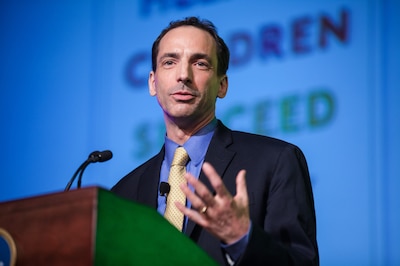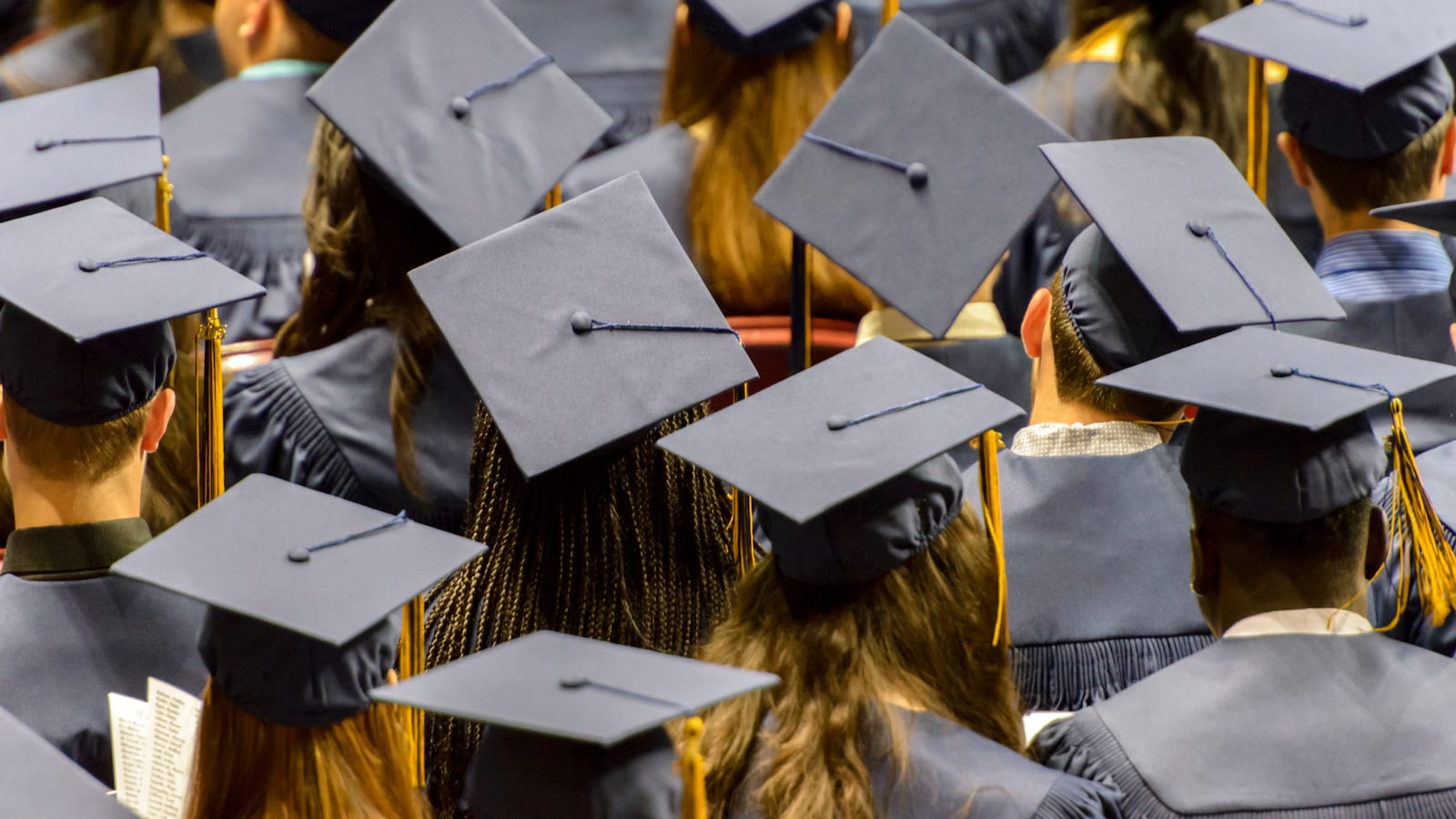All those college pennants in American classrooms and the focus on “college readiness” point to one fact: Despite the rising costs, a college degree retains a rare power to lift young people out of poverty.
And yet, many low-income students never make it to college — particularly the elite institutions that give poor students a supercharged economic boost.
In his new book, “The Years That Matter Most: How College Makes or Breaks Us,” journalist Paul Tough offers some reasons why. Among them: standardized tests like the SAT that give privileged students a leg up in admissions, selective colleges that turn away high-achieving poor students in favor of applicants who can pay more tuition, and wealthy universities that can afford to enroll more poor students but don’t.
But what about the low-income students who do make it to college but face 50-50 odds of graduating?
Chalkbeat has profiled some of those students in a series called “Ready or Not.” So we asked Tough, who spent several years visiting college campuses and talking to scores of students, how colleges could get more low-income and first-generation students to graduate.
He began by describing a college administrator in Texas who perfected the “kitchen-sink approach — throw every possibly intervention at students.”
This interview has been condensed and edited for clarity.
In your book you describe the work of David Laude, a chemistry professor whom the University of Texas in Austin appointed as its first-ever “graduation-rate champion.” In just a few years, he helped move the university’s four-year graduation rate from 51% to 70%. What were some of the strategies he used?
One of the weird things about writing about Laude was that there wasn’t a huge theory behind what he was doing.
His approach was a combination of practical interventions, things like summer programs for first-generation students before freshman year. Targeted freshman learning communities that gave students practical help negotiating college life as well as a sense of belonging that made them feel more of a connection with the University of Texas. Paid internships for students in sophomore, junior, and senior years. He also invested in advisors and mentors and mental-health counselors.
Laude described his strategy to me as a “kitchen-sink” approach — throw every possible intervention at students. Which in some ways makes it hard to write about, because it’s just: Do everything.

But in fact there was something very astute about that approach. The reality for students in that situation, for first-generation students — especially those who didn’t have the kind of opportunities or preparation that more affluent students did in high school — is that when they get to college, they’re just bombarded by implicit and explicit messages that make them think that they don’t belong and can’t succeed.
When you’re a student in that situation, it often just feels like everything is falling apart. You might have academic problems. You have financial problems. Sometimes you have social, emotional, or psychological problems. But to the student, it all just feels like one big problem. And the solution is not always clear.
Maybe you need a tutor. Maybe you need a $500 grant to get you through a particular weekend. Maybe you need therapy. Maybe you just need a friend — a peer mentor or a counselor. The only reliable way to help students in that situation is to provide them with lots of potential handholds, lots of different lifelines to grab onto when they feel like they’re slipping. That’s what I think was so effective about what UT did.
To what extent do you think that efforts to improve college outcomes need to involve K-12 schools?
That’s part of the answer, but I think it’s also important for people in higher education to understand that it is possible to make big improvements in students’ success rates in college without anything changing in K-12 education.
The number that stands out for me the most in David Laude’s graduation rate project was that the quartile of incoming freshmen at UT who had the lowest SAT and ACT scores, they experienced some of the biggest graduation-rate gains. Their four-year graduation rate went up from 39% graduating on time to 63% graduating on time during the five years that Laude was working on that project.
That means a lot. Nothing changed for those students in terms of their “college readiness.” But because of those kitchen-sink interventions, they graduated at much higher rates.
More colleges are embracing technology to guide admissions and even counseling, as you write about. They’re also bringing technology into the classroom with online courses that can customize learning. What do you think is the proper role of technology in improving college outcomes for students?
I’m mostly pretty skeptical about high-tech efforts to improve student outcomes. Not because I don’t think that technology can be useful, but because I think there is a tendency for colleges to use technology as a way of reducing the human element in their interactions with their students.
And the one thing that I think is clear from UT and from many other successful interventions is that what matters most in keeping college students engaged and enrolled — especially first-generation students — is the human connection. That’s the one common fact in all of David Laude’s interventions. They were all about putting people together in places where they could talk, communicate, and connect — whether that was peer-to-peer or with adult counselors, mentors, or tutors. And that just doesn’t work as well through online portals.
That said, I do think there can be a role for well thought-through supplements to human intervention. For instance, what Georgia State does with its data-driven advising program, I think that makes a lot of sense.
Using data to help inform advisors and counselors when a student needs help and enable those counselors to get to that student sooner rather than later, that’s really smart. It’s just that the help then needs to be delivered in a human way rather than a high-tech way.
We’ve been writing about the experiences of first-year college students in Detroit and Newark. Here in Newark, more students are attending and graduating college yet only about four in ten will earn any type of college degree within six years of enrolling. What are some of the main obstacles that keep students who do enroll in colleges — two-year or four-year — from earning degrees?
There are lots of obstacles. The first category is financial — the simple fact that attending those institutions often creates real financial burdens for families that don’t have a lot of resources.
Sometimes other family members need the support of college students. Bills come due. People get sick. Trying to go to college and pay a big tuition bill with chaotic family finances is really difficult. So that is one straightforward obstacle.
But beyond those financial pressures, our educational institutions — including K-12 systems as well as colleges — have not yet figured out a way to make the transition to college particularly smooth for many students. We’re mostly not doing a good job of making students feel more at home and more connected on a campus and in an institution that’s unfamiliar to them.
The final obstacle is the practical stuff: giving students the right academic preparation in high school. Making sure they’re taking the right classes, getting the right prerequisites, getting the right kind of scores and the right kind of knowledge in high school that will enable them to move onto college successfully.
You have spent six years looking at this research and visiting colleges all across the country. If you could wave a magic wand and make the higher education system more fair and live up to its promise for all students, what are the changes you would start with?
First, it is clear to me that private institutions, especially the most selective ones, could be admitting a lot more low-income students than they are. I don’t think it’s truly a high priority for a lot of those institutions to have a socioeconomically diverse undergraduate student body, and I think it should be.
But beyond that, the much bigger change would be for us, the public, to again invest in public higher education the way we did a generation or so ago, so that students have a good, cheap, reliable public alternative to those selective private institutions.
This would radically change the economics of going to college. It would mean you could go to college and get a degree if you had modest family income without incurring a lot of debt — which is exactly what middle-class students were regularly able to do in the past.
That, in turn, would lower the pressure around college on students, families, and institutions. Going to college wouldn’t be seen as this huge high-risk endeavor where you might bankrupt yourself and harm your family’s finances for years to come. If you chose the wrong major in the first year, it wouldn’t be a huge disaster. If you needed to transfer from one institution to another, it wouldn’t be catastrophic.
Until we go back to having a real public higher education system that is generously funded by the public, I think it’s going to be hard to solve a lot of these other problems. But that’s a change that we could definitely choose to make.

